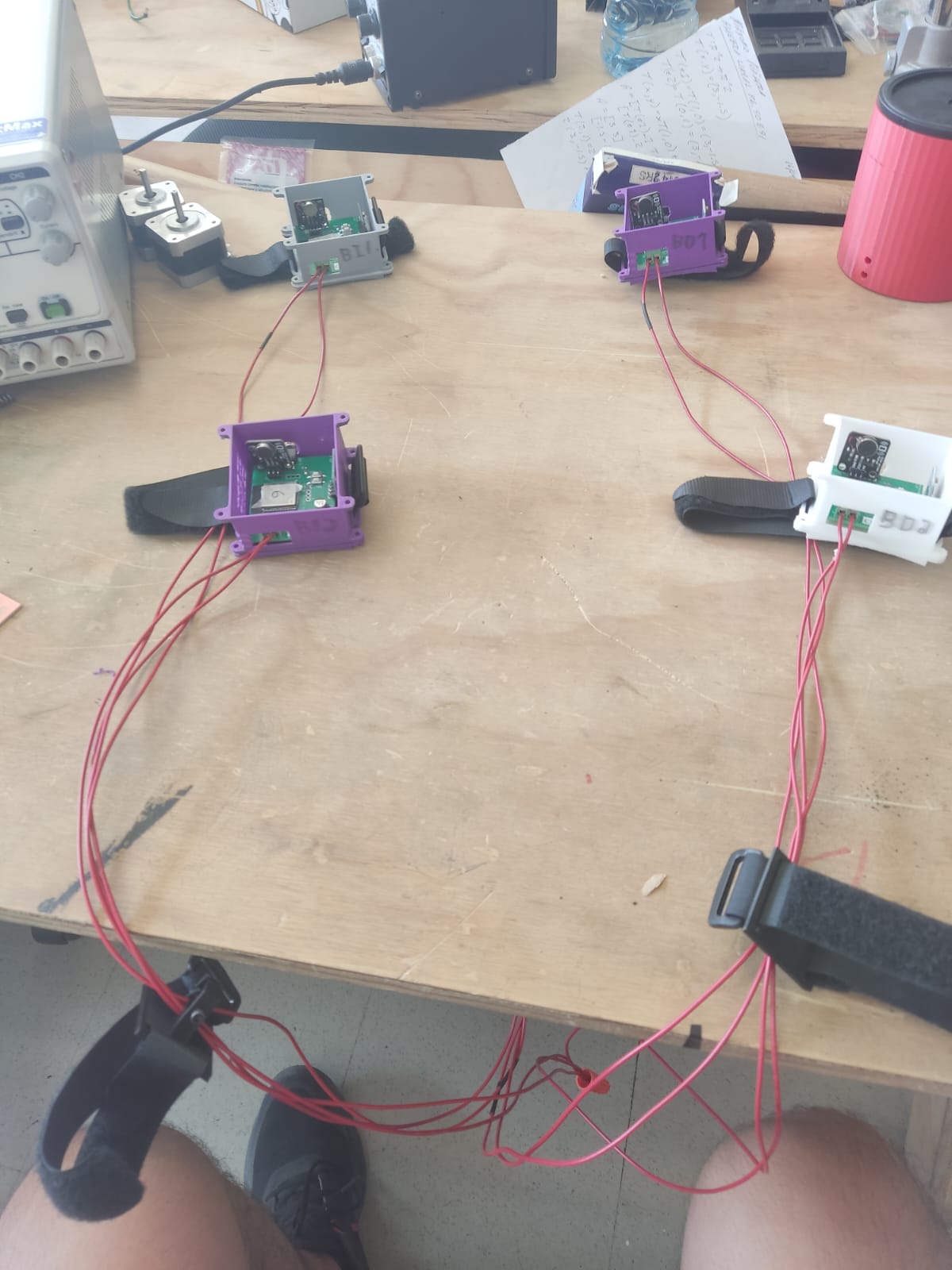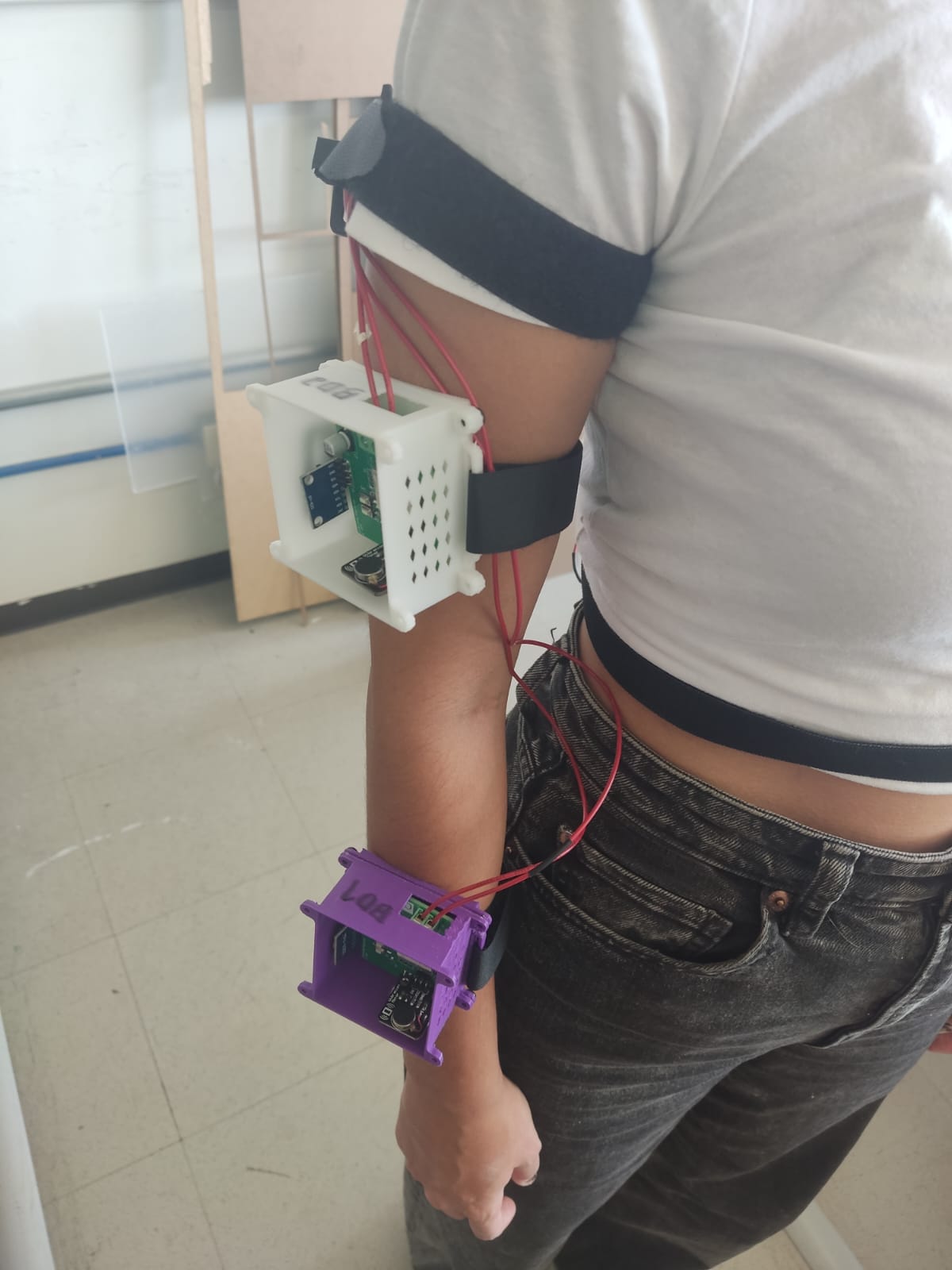A small piece for a larger machine
Applications and Implications
The final project has been on the horizon ever since the fab academy course started, my project hasn't changed since its first inception. A haptic feedback suit made up of accelerometers and gyroscopes that register the positioning and angling of different sections including all limbs (two circuits for each limb/ 8 total). The PCBs have already been manufactured and programmed, the communication established and a live data graphing section in a website has been completed.
All of these details are going to be properly adressed in the final project section later on as the documentation takes place.
Now, the main goal of this project was to create a haptic feedback suit with sensors that would aid the development of psychomotor skills in children who are visually impaired, this set of skills are essential to a child's development, as they cannot locate themselves within an open environment and lack a complete sense of perception that turns into fear of their surroundings, resulting in an incomplete development of their muscles, joints, and overall range of movement, amongs other things. With all this in mind, Isaac Hortiales (the other developer of this project) and I made contact with a soccer team called "Topos Puebla FC" which is a visually impaired soccer club for children and told them about how this suit might help the children train whenever there is a circumstance that wouldn't allow them to gather in numbers, something like the pandemic.
But how would it help them? Well, the children undergo a different type of physical training, using physical feedback, such as taps on their limbs to let them know if they have reached the correct position in which to perform the workout routine they are attempting to do. This suit aims to do something similar with the use of vibrations, a PWM 5V vibration module is connected to the PCB that activates whenever a user is within the required position range to properly perform the exercise, ensuring the proper development of their physical abilities.
In terms of previous iterations of a similar kind of project, there hasn't really been a lot of them, practically just one device has been developed, and it's not for the same purpose. This device consists of a set of gloves that have haptic feedback through vibrations in order to translate the act of artistic dance to certain regains of the user's hands. Other than that, there's isn't a lot to go on.
So, how did we do it? Well, we designed a PCB board that contains all the necessary components for a ESP-32-WROOM MCU, sensors, capacitors and cable connections so it can be manufactured with a double surface, now, since the university's facilities don't possess the necessary machinery for this procedure, we opted to let JLCPCB manufacture them so a standard of quality is guaranteed. After that came a little soldering, well actually a lot of soldering, since we needed about 8 PCBs that would connect to a 24V battery that is mounted with a velcro strap resembling a belt.
Then, there was the 3D printed cases that are used to protect the PCB against the elements and possible collisions, you can see the designs below and how the finished product came out with the PCB installed within using double-sided adhesive tape. We preferred to keep the lids off the cases as it would show all the components that are used for all of our system and it also allows us quick access for possible repairs or troubleshooting events.
After that I also noticed later on that the cable issue of the suit was getting a bit messy, so, I used some 3D printed clips to bring some neatness to satisfy my OCD, which was spiralling out of control. After this we strapped some velcro tape in each case so it can be worn by our test subjects and our manikin who we call "Milanese", it's an inside joke.



Thankfully, almost all components and materials are given to us by the university as part of being mechatronic students and being active in creating a project to the benefit of our school. The few things we needed to buy (battery, velcro, and PCBs) were cheap enough to avoid any possible snaggle in the development process. Here is a list with some of the estimates regarding the project.
| Qty | Description | Price | Link |
|---|---|---|---|
| 1 package | Velcro tape | $7.82 USD | Link |
| 9 inches (10 straps) | Velcro straps | $10.23 USD | Link |
| 1 Spool | 3D PLA Filament | Given by the university | Link |
| 32 | M3 Screws | Given by the university | Link |
| 8 | PCB Boards | $15.40 USD | Link |
| 1 | 11.1 V 2200 mah battery | $33.76 USD | Link |
| 1 spool | Electronic wiring | Given by the university | Link |
| 8 | PWM 5V Vibrator module | $16.37 USD | Link |
| 8 | MPU-6050 Acelerometer-Gyroscope | Given by the university | Link |
| 8 | 16V Aluminum Electrolytic Capacitor | Given by the university | Link |
| 8 | ESP32-WROOM | Given by the university | Link |
| 16 | SMD Push-button | Given by the university | Link |
| 16 | SMD 1206 Resistors | Given by the university | Link |
| 8 | Bipositional terminal block | Given by the university | Link |
All in all, with everything the IBERO Puebla kindly donated to the development of the suit, the project ended up only costing about $83.58 USD. Not really that costly.
The programming side
This is an example of one of the 8 codes that is written for each PCB, with a pre-loaded workout routine that sets the angles that the user must oscillate between. Sets up the connection for the graphing website that keeps a registry of the data through lines and dates regarding whatever it is the sensors picked up while testing.
Then, there are several additional codes that provide the connection between data and website interaction, here is another example.
Now, the website request new data whenever the connection between the sensors and the wifi network is established, so it's not constantly active, but consistently updating, every 2 seconds as the connection is established.
Is it worth it?
This is kind of a big project, so it's a bit complicated to explain, but in terms of its purpose, there is really two questions that need to be answered. So, does it work? Does it help the children? Long story short, yes and no, while the immediate impact is yet to be determined, this project's future goes beyond the people we are working with here in Puebla, by this I mean that by recording and registering all the data in regards to the workouts, code, and how things are done, the chance of replicating and improving a thing such as this are endless, and also, by having all the data from the tests we have done, people who are looking to research a bit of basic biomechanics in workouts for people with visual disabilities might encounter the data we are leaving on the internet, as one thing we noticed while making this project was the lack of information in regards to proper workout techniques and how people with visual impairment develop themselves in terms of sports and athletics.
In the end, the project was already evaluated by two qualified academics, one was our student coordinator and another was a teacher who specializes in computer systems and programming in general, there wasa public demonstration to a group of students to show a class how the device actually works.
Files
- All of the files will be presented in the final project section as the documentation keeps going.
